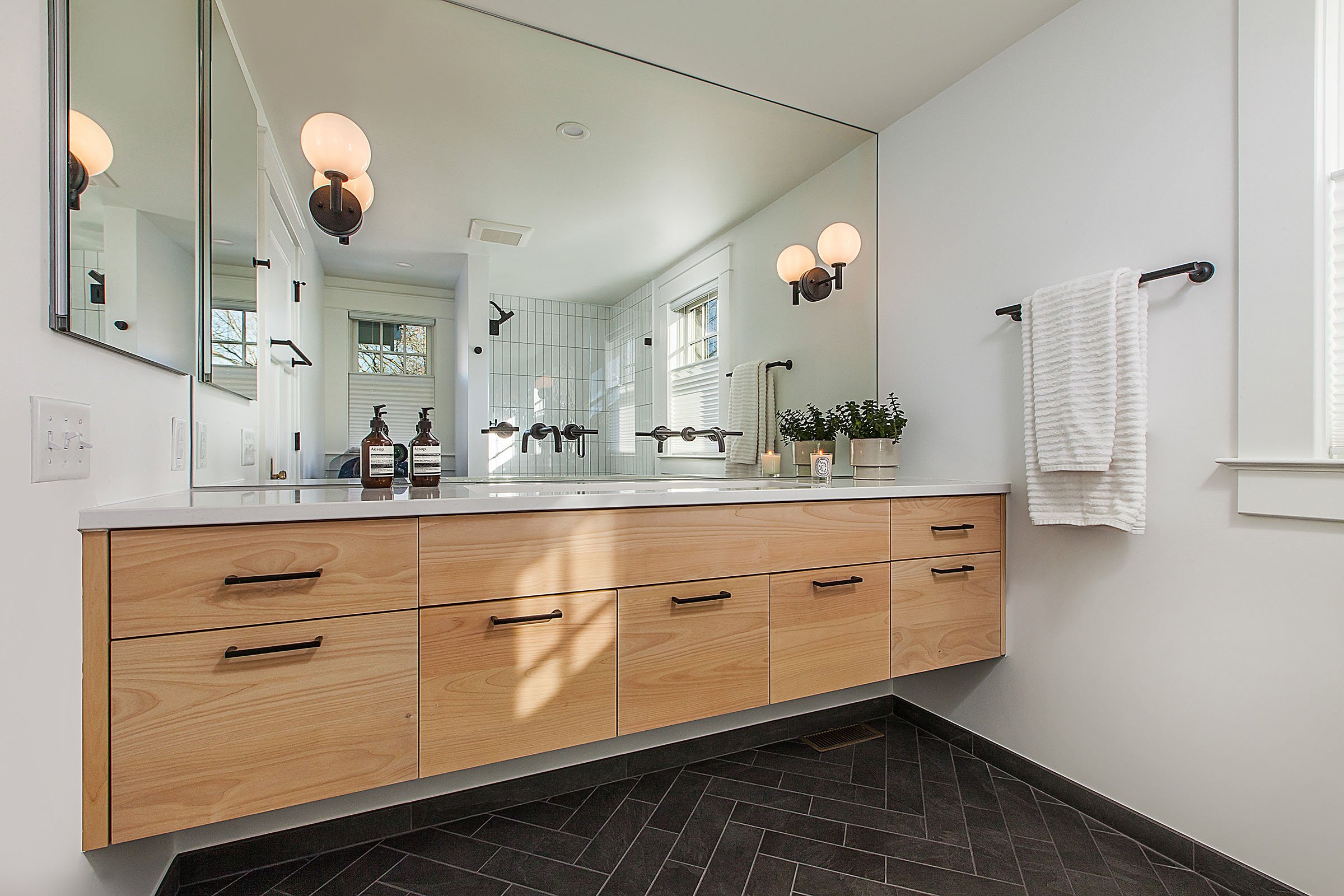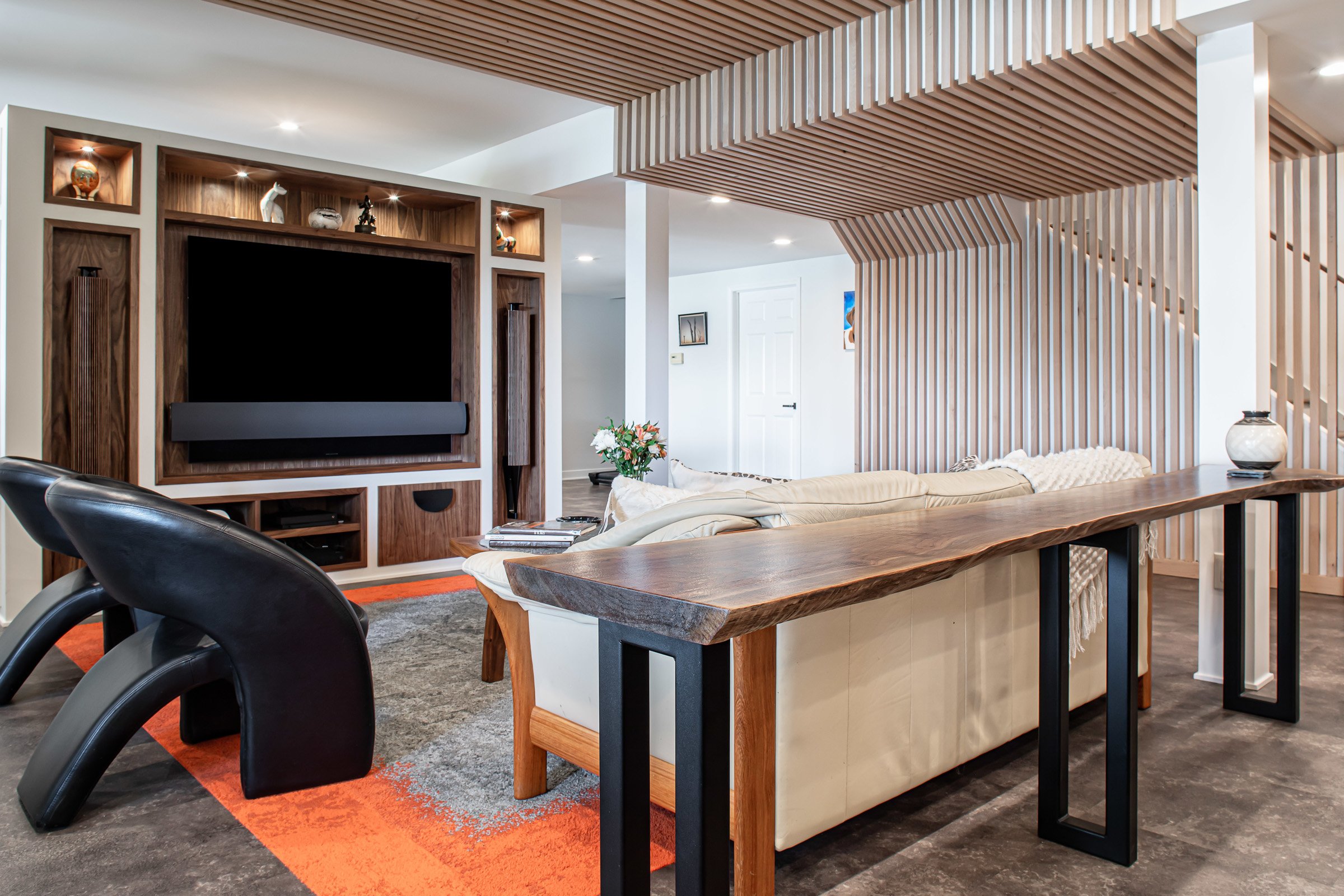1 min read
Riding the Renovation Rollercoaster: The Emotions Behind a Remodel
Every home remodeling journey comes with its own set of emotions, and no project is without its ups and downs. After remodeling homes in the greater...

Paint color is one of the most flexible elements in a space. It’s easy to change and inexpensive to boot. So why does it trip up even the most decisive homeowners?
Color sets the tone of a room. It subtly impacts how we perceive a space and as a result—how we respond physically and psychologically to it. You’re probably familiar with one facet of color psychology: warmer tones (red, oranges, and yellows) tend to energize us, whereas cooler colors are commonly associated with relaxation. We never see color objectively though. Light, surrounding objects and materials, our own experiences and beliefs all affect how color is perceived and responded to. Knowing how its environment influences color, however; can help you filter your options and make a decision. Here are five tools to filter your color options:
How do you want to feel in your space. Relaxed? Motivated? After you decide on how you want to experience your space, take ten minutes and look at a few photos of rooms. Pay attention to which photos give you your desired “feel” and the colors depicted, and use these colors as a starting point for your own selection.
Light quantity and type impacts how you perceive color and the overall tone of the room. Morning daylight and artificial lighting with a slightly yellow glow will make a room appear warmer. More light, especially daylighting, makes colors appear brighter; less will zap their intensity, making them appear darker and more gray. Evaluate the quantity and type of lighting in your space, and use the following guidelines to narrow down your color selection:
Limited lighting: Choose colors of lighter shades and more intensity (brighter)
Lots of lighting: Lighter and brighter colors are intensified. Choose colors with less intensity.
Warm lighting: Choose colors with greens, blues, and purple undertones (i.e. magenta as opposed to maroon) to counteract the warm glow.
Cool lighting: Offset cool lighting by choosing colors with more red, orange, or yellow in them, like a yellow-green instead of a pine green.
Your walls aren’t the only color source in your room. Flooring, furniture, cabinets and countertops interact with the lighting in your space, and therefore how you perceive paint colors. White oak tends to be a lighter color, allowing you to go darker with your other finishes. Cherry cabinets emphasize the reds in surrounding objects because of its own warm undertone, so offset them with a cooler wall color.
Remember color interacts with its surroundings. Always view your color options in the space! It will look different in your home than it did at the store or design office. Tape paint chips (preferably larger ones) to your walls. Better yet, purchase a sample pint and paint a few strokes. View it from multiple angles in the room and at different times of the day. Eliminate options that aren’t working for you.
Once you’ve narrowed it down to two or three paint colors, look at your choices side by side with fresh eyes. Because our perception of a color diminishes the longer we view it, our first glance is our best evaluation. Trust your gut and stick with your first impression.
And remember: there’s no one right answer to picking paint. And…you can always paint over it easily!

1 min read
Every home remodeling journey comes with its own set of emotions, and no project is without its ups and downs. After remodeling homes in the greater...

Transforming your home is not just about aesthetics; it's about finding solutions that fit your budget and lifestyle. When upgrading your kitchen or...

We’re thrilled to be featured in The Scout’s Guide’s latest piece, “How to Upgrade Your Basement, According to the Experts.” We invite you to check...